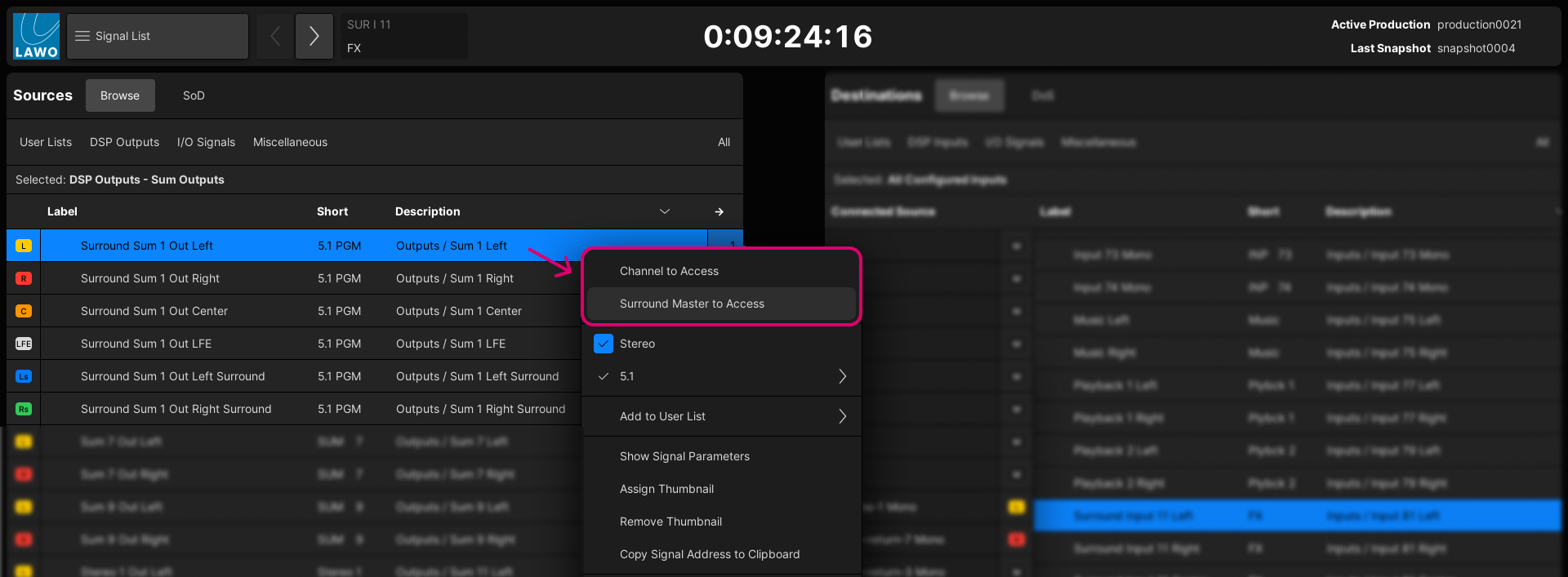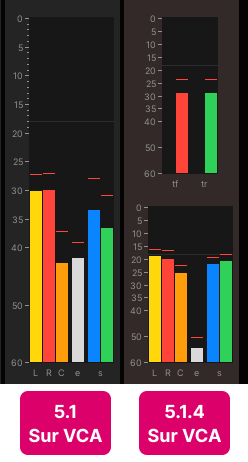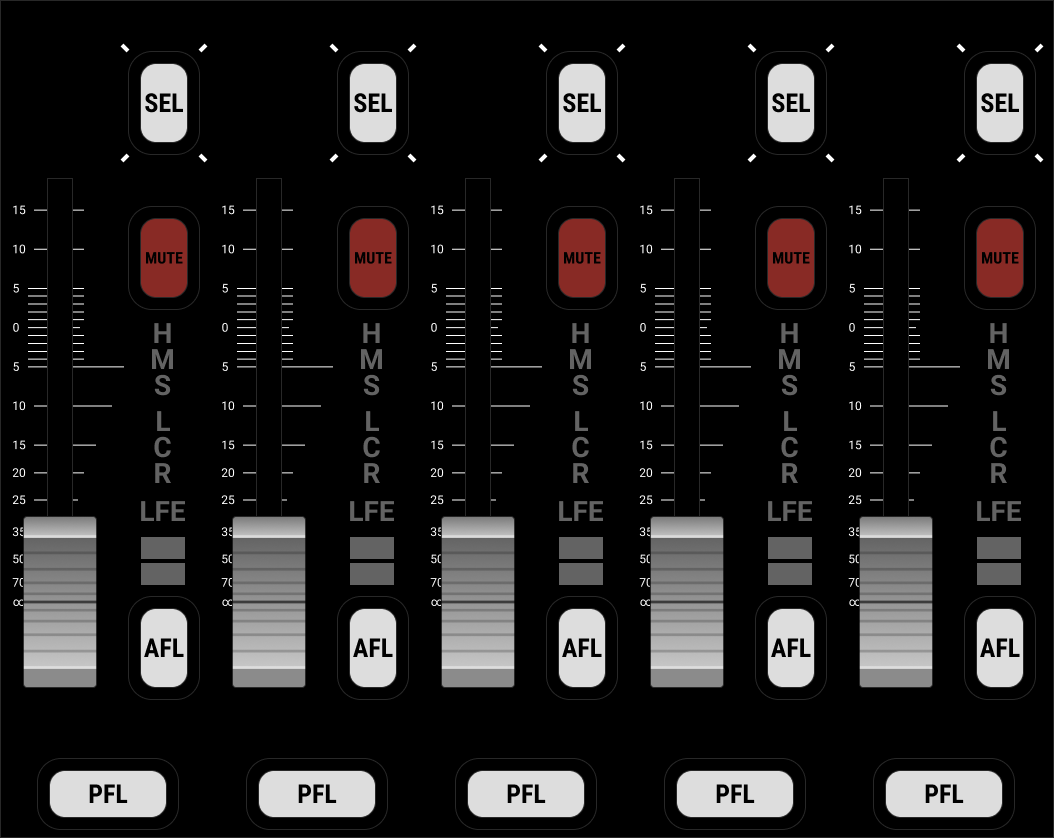mc²56 - Surround Masters
When a surround channel is created, a Surround VCA is automatically assigned. This allows you to control all of the component channels from a single fader strip.
This topic describes how to work with a Surround VCA master and reveal its component channels.
Fader Strip Assignment
A Surround VCA can be assigned to any channel or main fader strip.
1. First, select the Surround VCA - either from the Signal List display (shown below) or Access/Assign panel.

2. Then, use any of the usual methods to make the fader strip assignment. For example:
- Press ASSIGN on the STRIP ASSIGN panel (in the centre section).
- Press the fader SEL button (on a channel or main fader strip) - the assignment is made.
- Press ESCAPE to cancel out of fader strip assign.
3. The fader strip label updates and you will see metering for the surround component channels on the Channel Display.
The example below shows the Channel Display metering for a 5.1 and 5.1.4 master.

Surround VCAs
You can now use the Surround VCA to control all of the component channels. For example, to control the overall level or apply EQ, Compression, etc. This can be done either from the fader strip or Central Control Section in the usual manner.
When applying offsets, the behaviour of the parameters varies depending on the parameter. For example:
- Fader level and input gain are controlled relatively so that you can offset their positions.
- EQ frequency and Q are always set by the master (absolute), so that any change is inherited by all members of the VCA.
- Channel MUTE is switched on from a Surround VCA master but not off.
For more information, see mc²56 - Control Group Behaviour.
Editing the User Label
The user label can be edited from the Central GUI title bar when the Surround VCA is in access.
- Select the Surround VCA master (e.g. SUR S 1) - either by pressing its fader SEL button or using the Access/Assign panel.
- Switch the centre section LABEL buttons to USER LABEL.
- Type the text into the Access Channel label field.

Using Reveal
Either global Reveal or Reveal In Place can be used to reveal the Surround VCA component channels on individual fader strips. This makes it easy to apply offsets such as adjusting the level of the LFE channel.
Please note:
- For Surround VCAs, faders are always moving. This means that you will need to open the Surround VCA fader in order to adjust the component channel levels.
- When surround channels are created, the left/right components are automatically linked for stereo. This means that, when you reveal the slaves, each L/R component appears on a single fader strip.
- To adjust the left and right components independently, remove the stereo link: e.g. press SEL on the L/R slave channel and deselect the STEREO button on the IMAGE panel.
If the console is fitted with the Reveal Fader User Panel (in the Overbridge), then this provides another way of controlling the components of a Surround VCA.

This panel provides five dedicated faders and can only be used to reveal Surround VCAs.
Start by checking the Reveal Panel Assign Mode option (under Console → Access in the System Settings display). This determines what happens when a channel that is not a surround master is selected.
- Reveal Panel Assign Mode (on) = the reveal panel is cleared and performs no function (until the next surround master is selected).
- Reveal Panel Assign Mode (off) = the last selected surround master remains assigned (until the next surround master is selected).
Then check the Reveal Strip options (under Console → Reveal). These determine where the component channels appear when the Global Reveal function is active.
- To reveal only on the Reveal Fader User Panel, set the Reveal Strip Count to 0.
- Note that, these options affect Global Reveal only and so you can still use Reveal In Place to reveal a VCA.
Once the System Settings are set, the panel operates as follows.
- Select a Surround VCA master - either by pressing its fader SEL button or using the Access/Assign panel.
- The component channels appear automatically on the five faders; the names are shown in the fader label displays.
- Use the faders and Mute buttons to adjust the channel levels. You can also AFL, PFL or select (SEL) each channel.
The layout varies depending on the surround format, and whether channels are linked for stereo. For example, if the surround format is 5.1, you will see:
- Fader 1 = Lr (front LR linked for stereo)
- Fader 2 = C
- Fader 3 = LF (LFE)
- Fader 4 = Su (surround LR linked for stereo)
- Fader 5 = blank
If you remove the stereo linking for both the front LR and surround LR channels you will have 6 fader levels (too many for the user panel). To access the additional channels, a Central User Button can be factory-configured to switch say fader 3 between Centre and LFE.